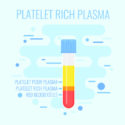Adult Stem Cell Therapy & Platelet Rich Plasma

Will PRP Treatment Help Me Avoid Surgery?
With any treatment option the outcome and sustained results are highly dependent on the extent of the injury. For example in the case of mild arthritis, PRP could potentially prevent the development of further degeneration. However, in advanced arthritic degeneration the goal of the treatment is to minimize pain and improve function. PRP (potentially if used in tandem with the use of stem cells) could avoid surgery such as joint replacements and potentially spinal fusion.
How is PRP created exactly?
Creation of PRP is simple, painless, and conveniently done at an office visit. The entire process of drawing blood to solution preparation only takes approximately 25-30 minutes. A small amount of blood is drawn from the patient, just like a routine blood test. Once the blood is drawn it is then placed into a centrifuge. The centrifuge is a machine that spins the blood at high speeds in order to separate the blood into red blood cells and concentrated platelets. Once the blood is separated the red blood cells are discarded, and we are left with concentrated platelet rich plasma (PRP) which is ready to be used in the treatment process.
Are the PRP injections painful and how are they administered?
The injection process does not take more than an hour, which includes the creation of the PRP as explained above. The injections are performed under image guidance to assure precise placement of the PRP. The guidance used is usually by ultrasound; however we may decide to use fluoroscopic guidance. The number of injections varies based on each patient’s individualized condition but typically range anywhere from two to six injections done over time. Patients typically experience significant reduction in pain after the first or second injection.
Generally speaking PRP injections are not painful; however the discomfort level depends on the part of the body being treated. Injections into the joint are of minimal discomfort. There is sometimes a small amount of pain after the procedure; however this does not last more than a few days and can be minimized with over the counter Tylenol. It is critical to avoid anti-inflammatory medications such as Aleve, Motrin, Celebrex, Naprosyn, and Mobic.
When Can I Expect results?
The benefit to PRP therapy is that unlike other treatments it has a sustained outcome and is categorized as a permanent fix. The timeframe for experiencing results is dependent upon the area of injury and the extent of the injury. On average, most patients start to see signs of improvement in the form of reduced pain or increased function within four to six weeks.
What Are The Risks of PRP?
Overall, PRP is an especially safe treatment option with no risk of allergic reaction because it is your own blood. However, anytime a needle is placed in the body, there is a risk of infection, bleeding, and nerve damage. These risks do not happen often, and are very rare. Other risks depend on the area being treated. If you are unsure of the risks of your specific condition, we can help answer your questions.
For more information about PRP treatments contact our office today online or call 941-404-2703.






